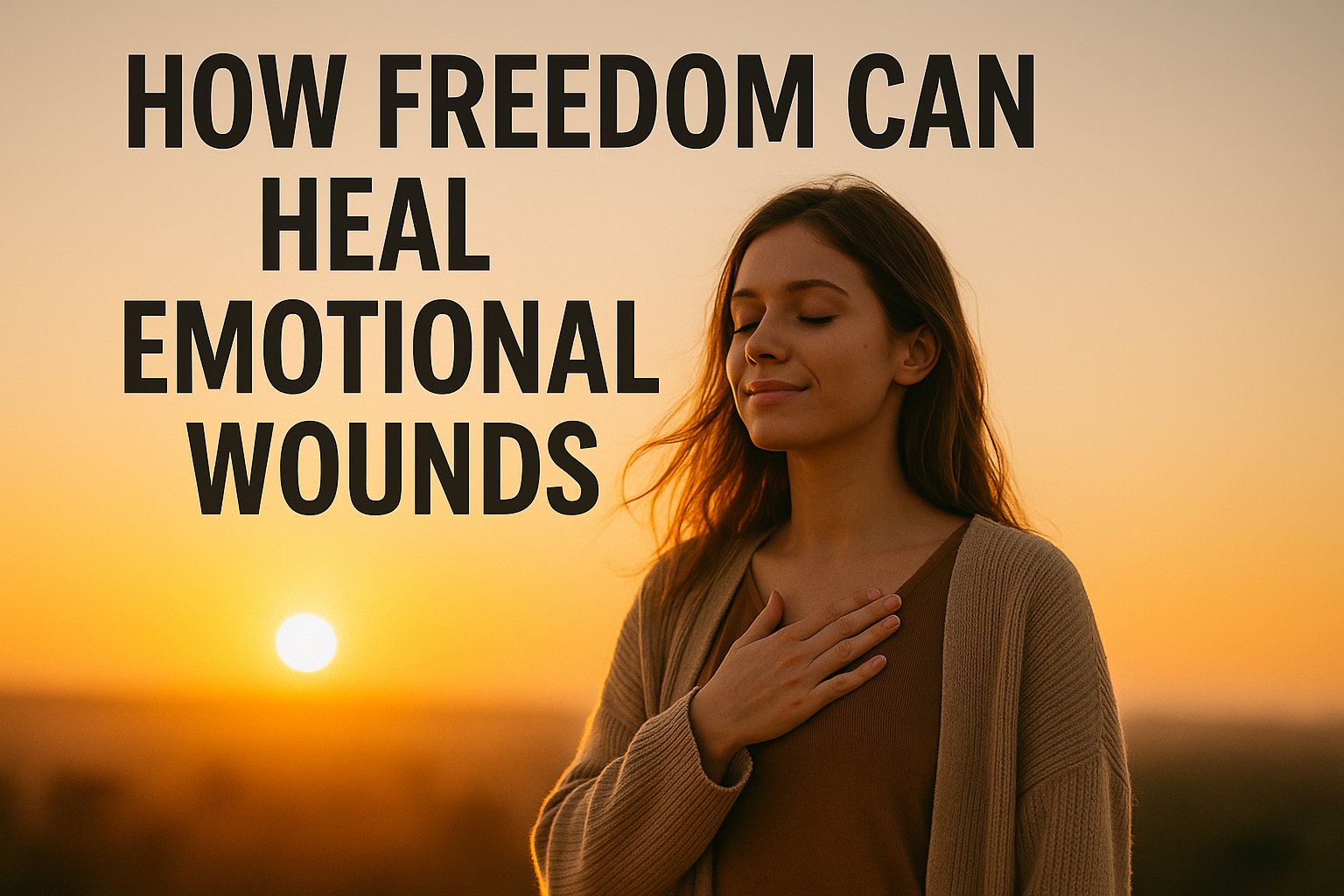Emotional wounds are an inevitable part of the human experience. Whether caused by childhood trauma, broken relationships, rejection, or life’s disappointments, these wounds often linger beneath the surface—impacting our confidence, decisions, and sense of self. While therapy, time, and support are essential tools for healing, there’s another powerful force that’s often overlooked: freedom.
Freedom is not just about physical space or rights. It’s about inner liberation—the ability to choose healing over hurt, growth over fear, and self-love over self-criticism. In this article, we’ll explore how freedom can play a vital role in healing emotional wounds and creating a more peaceful, empowered life.
Understanding Emotional Wounds
Emotional wounds are the psychological injuries we carry from painful events. These wounds can result in:
- Low self-esteem
- Fear of vulnerability
- Difficulty trusting others
- Negative self-talk
- Avoidance of emotions
Often, we cope by hiding these wounds, pretending they don’t exist, or building emotional walls. But true healing requires facing them with compassion—and that’s where freedom comes in.
The Link Between Freedom and Emotional Healing
Freedom provides the space and permission needed for true healing. Without freedom, people may stay trapped in toxic cycles, repressed feelings, or harmful environments. With it, we gain the courage to examine our pain and make choices that lead to wholeness.
Here’s how freedom facilitates emotional healing:
1. Freedom to Feel
Many people are taught to suppress their emotions—to “be strong,” “stay positive,” or “move on.” But healing requires us to fully feel.
Freedom gives you permission to:
- Cry without shame
- Acknowledge anger without guilt
- Admit fears without judgment
By allowing yourself to feel, you create a safe space where healing can begin.
2. Freedom to Express
Emotional pain often becomes heavier when it’s kept inside. Expression is a form of release—and freedom empowers you to share your truth in your own way.
You might express yourself by:
- Talking to a trusted friend or therapist
- Writing in a journal
- Creating art or music
- Speaking your story publicly
When you express your emotions, you validate your experience—and validation is a key step in healing.
3. Freedom from Judgment
One of the biggest blocks to healing is self-judgment. We blame ourselves for the pain, feel weak for struggling, or believe we “should be over it by now.” Freedom involves releasing this harsh inner critic.
Instead of judgment, practice:
- Self-compassion
- Understanding your trauma responses
- Replacing criticism with kindness
This shift frees you from shame and opens the door to inner peace.
4. Freedom to Forgive
Forgiveness is not about condoning harm—it’s about releasing yourself from the weight of pain. Freedom allows you to forgive when you’re ready, in a way that honors your healing journey.
Freedom means:
- Forgiving others so they no longer control your emotions
- Forgiving yourself for what you didn’t know or couldn’t do
- Letting go of bitterness to make space for peace
Forgiveness is one of the most liberating acts of healing.
5. Freedom to Let Go of the Past
Emotional wounds can keep us anchored in the past. We replay memories, relive conversations, and remain defined by old pain. Freedom is the ability to rewrite your story and move forward.
You might find freedom by:
- Creating new experiences
- Setting boundaries with people from your past
- Releasing attachments to past identities or roles
Letting go doesn’t erase the pain—it honors your growth beyond it.
6. Freedom to Choose Your Future
Perhaps the most powerful freedom of all is the freedom to choose. You are not your trauma. You are not your pain. You are the author of your next chapter.
Use your freedom to choose:
- New relationships based on trust and respect
- Goals that reflect your values
- Habits that nurture your emotional well-being
- Environments that support your growth
Freedom gives you the power to design a future where you are not limited by your past.
Creating a Healing Environment of Freedom
Healing doesn’t happen overnight—but it thrives in the right environment. To foster emotional freedom, consider:
- Therapy or coaching: A safe space to explore your inner world
- Journaling: A private outlet for honest expression
- Mindfulness practices: Help you stay present instead of trapped in the past
- Supportive relationships: Surround yourself with people who uplift and understand you
You deserve to feel safe, seen, and free—especially while healing.
Conclusion: Freedom Is a Path to Emotional Liberation
Emotional wounds don’t define you. They are part of your story, but not the end of it. With freedom—freedom to feel, express, forgive, and move forward—you reclaim your power. You become the healer of your own heart.
Choosing freedom is an act of courage. It means saying: “I deserve peace. I deserve growth. I deserve to be free.”
No matter what pain you carry, remember this: you are not stuck. You are not broken. You are free to heal—and that is where your true strength begins.

